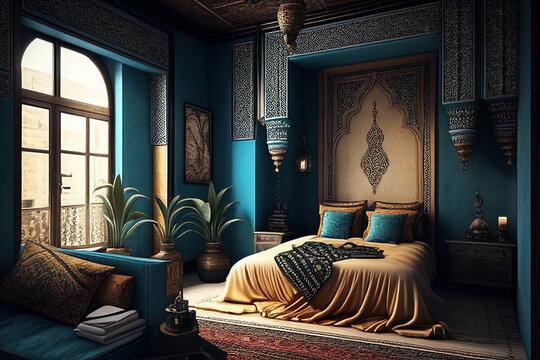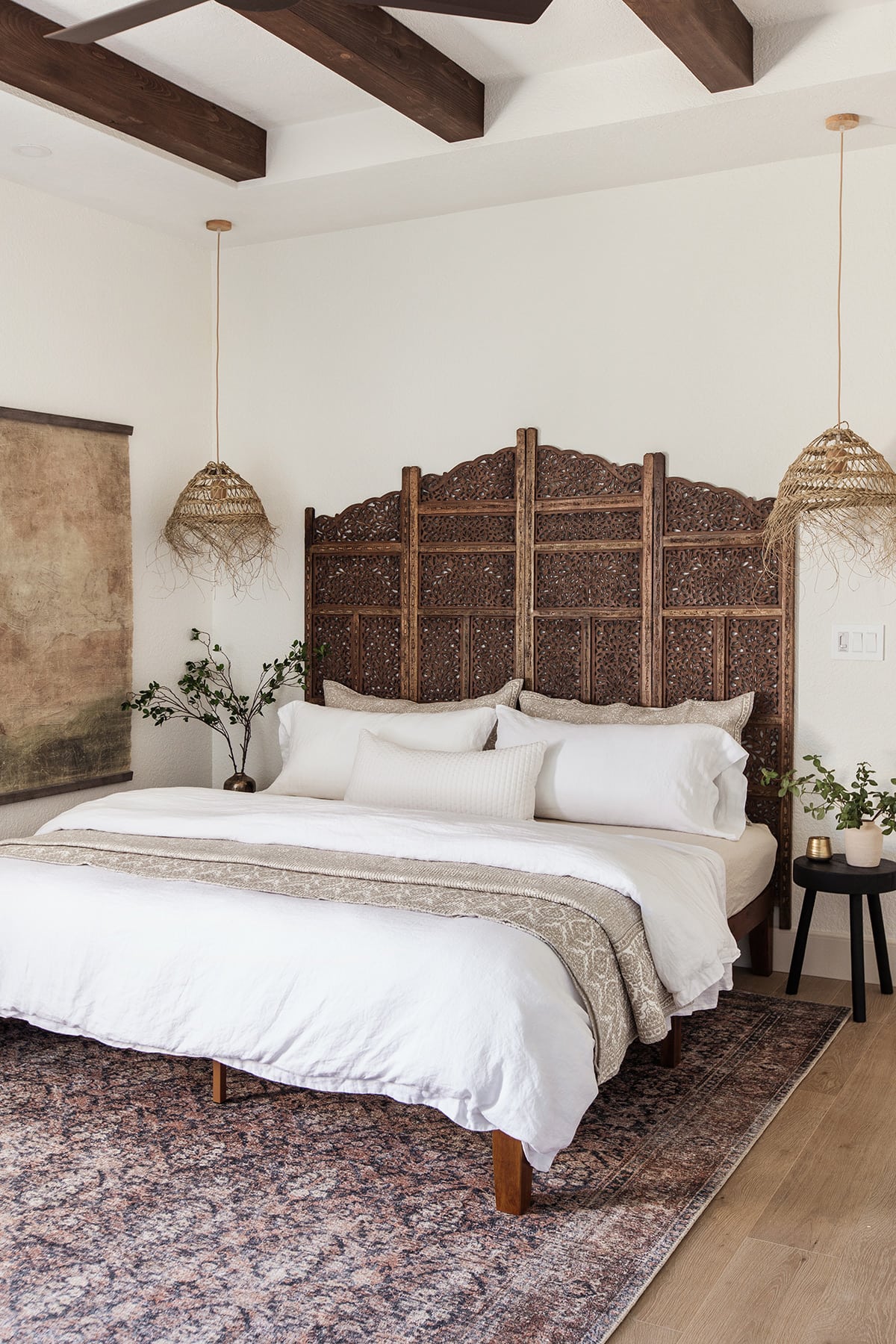Welcome to the enchanting world of Moroccan decor! If you’ve ever gazed in awe at the vibrant colors, intricate patterns, and rich textures that define Moroccan interiors, then you’re in for a treat. In this comprehensive guide, we will explore how to incorporate Moroccan design elements into your own living spaces, drawing from my personal experiences and a wealth of design knowledge.
Understanding Moroccan Decor
Moroccan decor is not just about aesthetics; it’s a reflection of a rich cultural heritage that blends influences from Berber, Arab, and European traditions. It evokes a sense of warmth, comfort, and exotic charm.
The Key Elements of Moroccan Decor
- Color Palette: Bold hues such as deep reds, vibrant blues, and earthy browns.
- Patterns: Intricate tile work, geometric shapes, and floral motifs.
- Textiles: Plush cushions, woven rugs, and luxurious throws.
- Furniture: Low seating, ornate wooden pieces, and handcrafted items.
- Lighting: Lanterns, candles, and intricate light fixtures that cast beautiful shadows.
Designing Your Moroccan Room
Ready to dive into designing your Moroccan-inspired room? Let’s break it down step by step!
Selecting Your Color Palette
Choosing the right colors sets the tone for your Moroccan room. Consider using a mix of warm and cool tones. Here’s a suggested color scheme:

| Color | Effect |
|---|---|
| Deep Red | Brings warmth and richness. |
| Turquoise | Creates a calming and refreshing atmosphere. |
| Gold | Adds a touch of luxury and sophistication. |
| Earthy Brown | Grounds the space and adds a rustic charm. |
Incorporating Patterns
Moroccan decor is synonymous with patterns. Use tiles, fabrics, and wall art to incorporate these designs throughout your room:

- Tile Work: Consider a patterned tile backsplash or flooring for a stunning focal point.
- Cushions and Rugs: Incorporate textiles with geometric designs or intricate embroidery.
- Wall Art: Hang traditional Moroccan art pieces or canvas prints featuring Moroccan motifs.
Choosing the Right Textiles
Textiles are essential in achieving that cozy Moroccan vibe. Here are some recommendations:

- Floor Cushions: Opt for large, plush floor cushions for seating that invites relaxation.
- Bedsheets and Throws: Use colorful throws on your beds or sofas to enhance warmth.
- Rugs: A vibrant Berber rug can anchor the space and add depth.
Furniture Selection
When it comes to furniture, low-to-the-ground pieces are essential in Moroccan decor. Here are some ideas to consider:
- Low Seating: Look for benches or poufs instead of traditional sofas.
- Wooden Tables: Choose intricately carved wooden tables for authenticity.
- Handcrafted Pieces: Incorporate unique, artisanal furniture for personal touch.

Lighting and Ambiance
Lighting can dramatically change the atmosphere of your Moroccan room. Use the following tips to create a magical ambiance:
- Lanterns: Hang decorative metal lanterns to infuse traditional charm.
- Candles: Use candles in ornate candle holders to create warmth and intimacy.
- Soft Glow: Opt for soft lighting that casts gentle shadows for a cozy feel.

Room Ideas: Moroccan Inspirations
Let’s take a look at some specific room ideas that embody the Moroccan decor style:
Living Room
Your living room is the heart of your home. To create a Moroccan-inspired living room:

- Incorporate a large, colorful area rug as the centerpiece.
- Use low seating options like poufs, floor cushions, and low tables.
- Add a mix of patterned cushions to your seating area.
- Install decorative light fixtures that cast intricate shadows on the walls.
Bedroom
A Moroccan bedroom should feel like a serene oasis. Here are some tips:

- Layer your bedding with rich textiles and patterns.
- Include a carved wooden headboard for an ornate touch.
- Use Moroccan lanterns or pendant lights for soft illumination.
- Add a cozy seating area with colorful floor cushions.
Dining Room
Make your dining room a feast for the senses by incorporating the following elements:
- Opt for a large, round table surrounded by low seating.
- Decorate with traditional Moroccan dishware.
- Use brightly colored table linens or a woven table runner.
- Add decorative accents like lanterns and colorful vases.
Pros and Cons of Moroccan Decor
As with any design style, Moroccan decor has its advantages and disadvantages. Here’s a breakdown:
| Pros | Cons |
|---|---|
| Rich Cultural Heritage | Can be overwhelming if not balanced correctly. |
| Vibrant and Colorful | Requires careful selection of colors to avoid clashing. |
| Comfortable and Cozy | Can be difficult to clean, particularly textiles. |
| Unique and Artistic Pieces | May require a higher budget for authentic items. |
Frequently Asked Questions (FAQs)
What are the main characteristics of Moroccan decor?
Moroccan decor is characterized by vibrant colors, intricate patterns, lush textiles, low seating arrangements, and culturally rich handcrafted furniture and decor items.
How can I incorporate Moroccan decor on a budget?
To incorporate Moroccan decor on a budget, consider DIY projects, thrift shopping for second-hand items, or using colorful textiles and accessories to easily transform space without large costs.
What type of lighting is best for Moroccan rooms?
Soft, ambient lighting is ideal for Moroccan rooms. Use lanterns, pendant lights, and candles to create a warm and inviting atmosphere.
Are there any specific plants that fit Moroccan decor?
Yes! Plants like succulents, cacti, olivias, and palm trees incorporate a natural element that complements Moroccan design beautifully.
How do I maintain Moroccan decor?
To maintain Moroccan decor, focus on regular cleaning of textiles, careful dusting of decorative pieces, and ensuring colors stay vibrant by avoiding direct sunlight and harsh chemicals.
Final Thoughts: Your Moroccan Oasis Awaits
Creating a Moroccan decorated room is about more than just the visual appeal; it’s about creating a sanctuary that embodies warmth, comfort, and a touch of exotic charm. Whether you choose to focus on textiles, patterns, or unique pieces of furniture, remember to inject your personality into the design. Happy decorating!